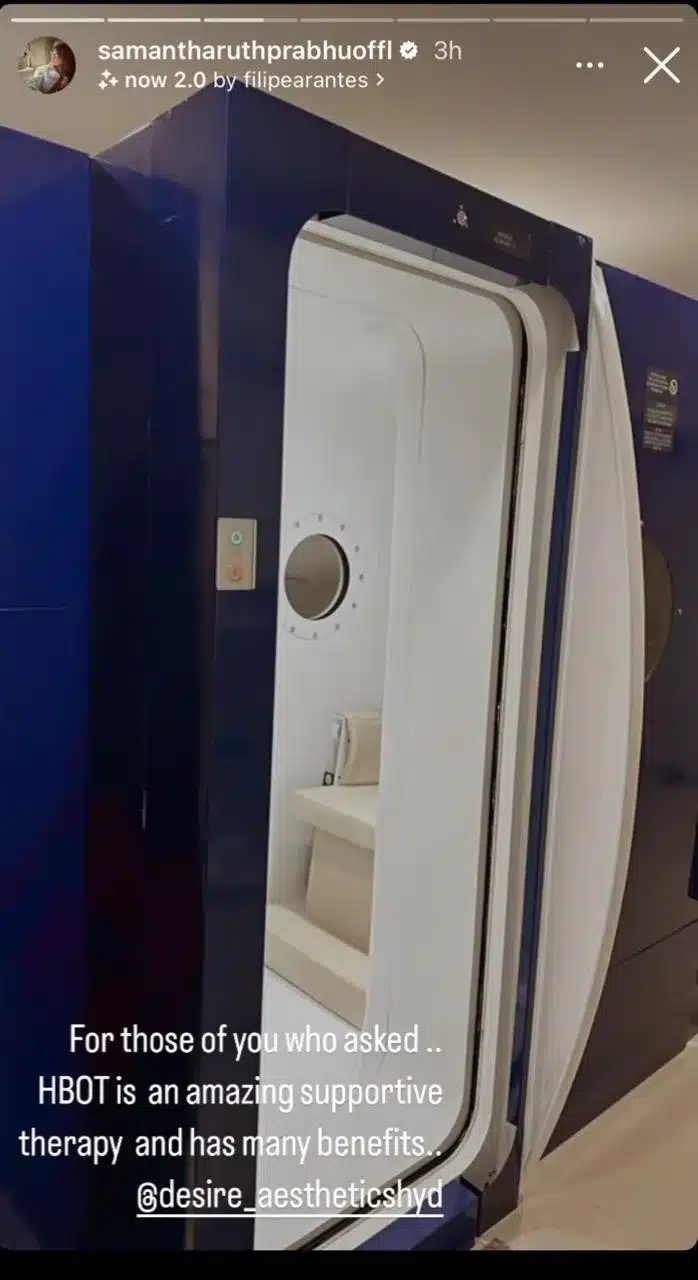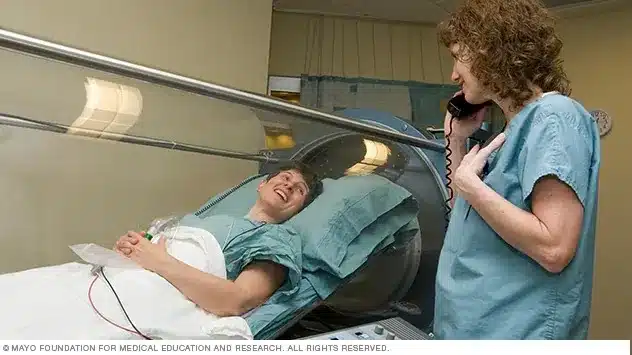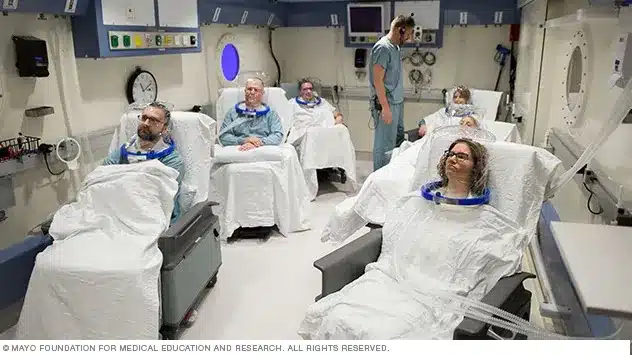Samantha Ruth Prabhu had undergone Hyperbaric Oxygen Therapy for Myositis earlier this year. The actress was suffering from an autoimmune condition, Myositis, which causes the body’s muscles to become weak and tired. After a recent diagnoses, the actress decided to treat Myositis with HBOT.
Myositis encompasses several forms, including polymyositis, dermatomyositis, inclusion body myositis, and necrotizing myopathy. These conditions can cause muscle weakness, pain, fatigue, and a range of other symptoms that can significantly impact a person’s quality of life. Traditional treatment approaches for myositis typically involve immunosuppressive drugs, physical therapy, and supportive care. However, for some individuals, these interventions may not provide sufficient relief.
HBOT is beneficial for myositis patients due to its ability to increase the oxygen supply to tissues and promote healing. The therapy involves patients being placed inside a hyperbaric chamber, where the atmospheric pressure is higher than normal. Under this pressure, the lungs can absorb more oxygen, and it gets dissolved into the bloodstream in greater quantities. This increased oxygen delivery enhances tissue oxygenation and has several positive effects on the body.
One of the key benefits of HBOT in myositis is its anti-inflammatory properties. In myositis, muscle tissue becomes inflamed due to an autoimmune response. The increased oxygen levels delivered during HBOT can help reduce inflammation by stabilizing immune function and reducing the release of pro-inflammatory molecules. By mitigating inflammation, HBOT may alleviate muscle pain and swelling, improving the overall symptoms experienced by myositis patients.
Additionally, HBOT promotes tissue repair and regeneration. The improved oxygenation provided during the therapy stimulates the growth of new blood vessels, a process called angiogenesis. Increased blood flow to the affected muscles can enhance their healing capacity and support the clearance of waste products and toxins from the tissues. This improved circulation also aids in delivering vital nutrients to the muscles, which can speed up recovery and improve muscle strength.
It’s important to note that HBOT should be used as an adjunctive therapy alongside standard treatments for myositis. Each individual’s response to HBOT may vary, and the therapy should be administered under the guidance of a qualified healthcare professional experienced in hyperbaric medicine.
Samantha Ruth Prabhu who recently underwent hyperbaric therapy for myositis, a debilitating autoimmune condition, has taken to social media to share her positive experience with the therapy. In an Instagram story, Samantha described hyperbaric oxygen therapy (HBOT) as an amazing supportive therapy with numerous benefits.
Understanding hyperbaric oxygen therapy (HBOT) and its benefits
Samantha explained that the therapy helps reduce inflammation, heal infections, and repair damaged tissue. According to the Cleveland Clinic, HBOT is commonly used to treat chronic wounds and various medical conditions by providing the body with a higher concentration of oxygen than normal air.
- Hyperbaric oxygen therapy (HBOT) is a medical treatment that exposes the body to 100% pure oxygen in a pressurized chamber
- HBOT has been used to treat a range of medical conditions.
- Before undergoing HBOT, individuals must undergo a thorough assessment.
HBOT as a treatment for various medical conditions
Mayo Clinic states that HBOT increases the amount of oxygen the blood can carry, promoting healing and aiding tissue survival. The therapy has been used to treat conditions such as severe anaemia, brain abscess, burns, carbon monoxide poisoning, non-healing wounds, radiation injury, and traumatic brain injury, among others. Samantha’s decision to undergo HBOT for her myositis demonstrates the therapy’s potential effectiveness in managing autoimmune diseases.
Preparing for hyperbaric oxygen therapy
Before starting HBOT, individuals undergo a thorough assessment to determine the duration and frequency of treatment sessions. It is essential to discuss any medical conditions, medications, or medical implant devices with healthcare providers, as some devices may malfunction in a hyperbaric environment. Additionally, certain skin care products should be avoided due to their potential to ignite in the presence of pure oxygen.
The experience of undergoing HBOT
During the therapy, patients sit or lie in a hyperbaric chamber, either alone or with others. The chamber is pressurized and the patient breathes normally while receiving the oxygen treatment. Some discomfort, such as clogged or popping ears, similar to the experience during flights or high-altitude travel, may occur. However, this can be relieved by yawning or swallowing water. Patients can engage in activities like watching television, listening to music, or reading to pass the time.
Post-therapy considerations and recovery
After the therapy session, the pressure inside the chamber is gradually reduced, allowing the body to readjust. A healthcare provider monitors vital signs and conducts necessary examinations before the patient can change back into their clothes and leave the facility. While some individuals may feel sleepy afterwards, it is not mandatory to have someone drive them home although having a companion is recommended.
Cited by: Republic World




